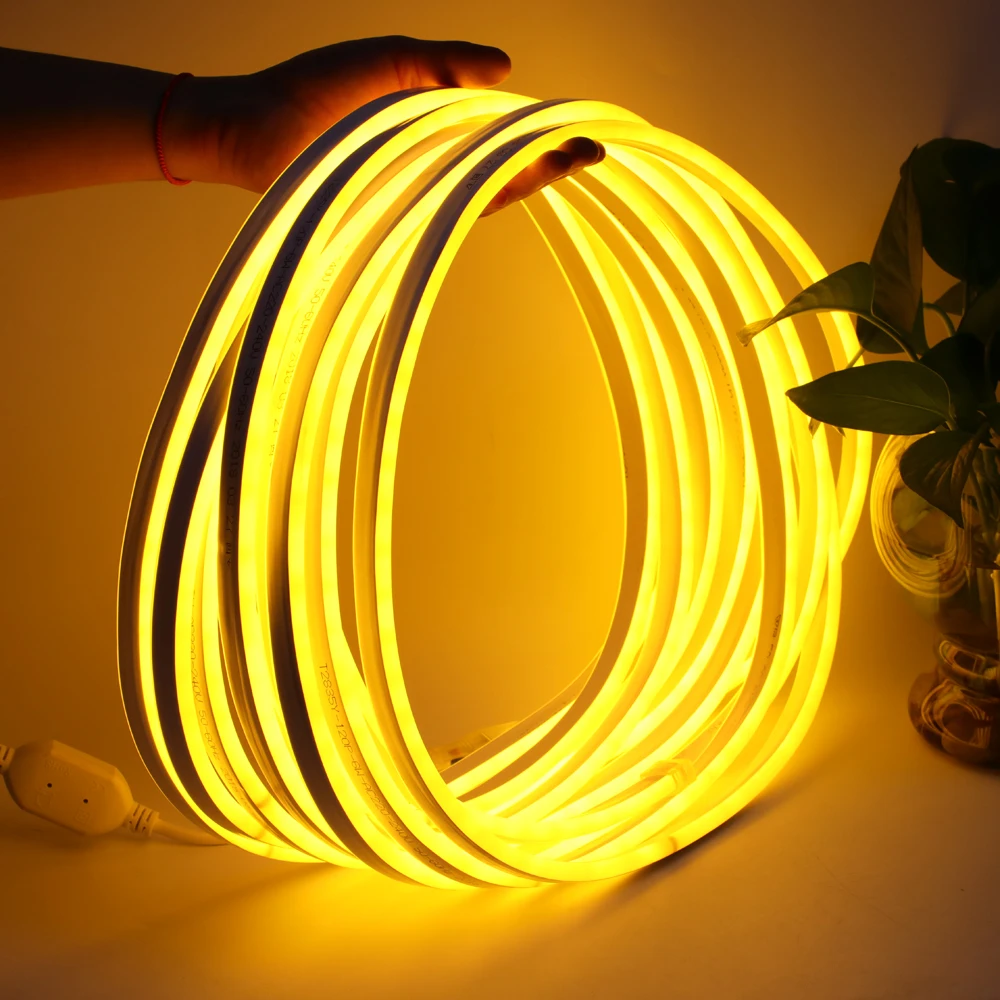Table of Contents
ToggleLED strip lights are now a staple in both residential and commercial lighting. From under-cabinet glow to ambient architectural illumination, their flexibility and energy efficiency make them one of the most in-demand lighting solutions in 2025.
As more businesses enter the LED lighting space—whether for retail, wholesale, installation, or branding—finding the right LED strip lights manufacturer becomes critical. But it’s not just about choosing a supplier. You need one that meets your expectations for quality, pricing, and customization.
This guide will walk you through how to evaluate a manufacturer from these three perspectives, helping you make informed decisions that protect your investment and strengthen your brand.
Why Manufacturer Selection Matters
Your LED strip lights supplier is more than just a vendor—they’re your business partner. The wrong choice can result in:
-
Poor lighting performance
-
Short product lifespan
-
Customer complaints
-
Increased returns
-
Missed deadlines
-
Damaged reputation
On the flip side, the right manufacturer will enable you to deliver high-quality, reliable, and differentiated products that customers trust and love.
Let’s break down what you need to know under three key areas: Quality, Pricing, and Customization.
1. QUALITY: What to Look For
Not all LED strips are created equal. Two products may look similar at a glance, but the internal components and manufacturing practices can vary dramatically.
Key Quality Components to Consider:
-
LED Chips:
Look for brands that use top-tier chips such as Samsung, Epistar, Osram, or Bridgelux. These chips offer better brightness, consistency, and longevity. -
PCB Thickness and Material:
A thicker PCB (usually 2oz copper) helps with heat dissipation and ensures the LED strip performs well over time without voltage drops or hot spots. -
Color Consistency:
High-quality manufacturers ensure tight binning, so color temperatures don’t shift from one batch to another. -
CRI (Color Rendering Index):
A CRI of 90+ is ideal for areas where color accuracy matters, such as retail, hospitality, or photography studios. -
IP Rating:
For outdoor or humid environments, check the IP rating (e.g., IP65, IP67, IP68). Top manufacturers offer waterproofing that doesn’t impact brightness or flexibility. -
Testing and Certification:
Ensure the product passes critical certifications like:-
CE / RoHS for Europe
-
UL / ETL for North America
-
LM80 and TM21 for lumen and lifespan testing
A manufacturer committed to quality will happily share test reports and documentation.
-
2. PRICING: More Than Just the Number
Price matters—but it’s not just about getting the lowest number. Great pricing is about value for money, long-term performance, and sustainable profits.
Pricing Tips When Sourcing LED Strip Lights:
-
Balance Quality and Cost:
Low-cost strips may save money upfront, but high failure rates, inconsistent brightness, or color mismatches can lead to more returns and lost trust. -
Volume Discounts:
Discuss bulk pricing and negotiate based on MOQ (Minimum Order Quantity). Many manufacturers offer tiered pricing depending on the order size. -
Long-Term Agreements:
If you’re planning repeat orders, discuss long-term pricing contracts or annual purchase commitments. This can protect you from market volatility and currency shifts. -
Hidden Costs:
Factor in:-
Shipping and customs
-
Packaging (if you need branded solutions)
-
Returns or replacement policies
-
Taxes and import duties
Great manufacturers are transparent and help you estimate the true landed cost.
-
-
Payment Terms:
Flexible payment terms like 30% upfront and 70% on delivery or escrow options are often signs of a mature, trustworthy supplier.
3. CUSTOMIZATION: Stand Out from the Crowd
Customization isn’t just about aesthetics—it can set your brand apart in a crowded market.
What Can Be Customized:
-
LED Density & Power:
Choose between 30, 60, 120, or even 240 LEDs per meter based on brightness needs. Adjust wattage and voltage (12V, 24V, or 48V). -
Color Options:
Select from single-color, RGB, RGBW, Tunable White, or even addressable digital strips like WS2812 or SK6812. -
Control Systems:
Integrate with:-
Remote controllers
-
Wall dimmers
-
Smart home systems (Zigbee, Wi-Fi, Tuya, Alexa, Google Home)
-
-
Waterproofing Methods:
Silicone coating, extrusion, nano-coating, or PU potting can be selected depending on indoor/outdoor applications. -
Packaging & Branding:
Most reputable manufacturers offer OEM/ODM services, which include:-
Custom logos on PCBs
-
Branded reels or spools
-
Personalized retail boxes and manuals
-
Barcoding and batch tracking
-
-
Length & Cut Points:
Standard strips are 5 meters, but you can request custom lengths and specific cutting intervals for easier installation.
Pro Tip: Ask These Questions Before You Commit
-
Can I receive samples for testing before placing a bulk order?
-
Do you offer technical documentation and certifications with your products?
-
What is your average lead time for bulk orders?
-
How do you handle warranty claims and product failures?
-
Do you offer support for product development or lighting design?
-
Can I tour your factory virtually or in person?
A trustworthy manufacturer will answer transparently and quickly.
Final Thoughts
Choosing the right LED strip lights manufacturer isn’t about just finding the cheapest quote—it’s about aligning with a partner who can deliver superior quality, reasonable pricing, and creative customization to grow your business.
In 2025, as LED technology becomes smarter and more integrated into our daily lives, the ability to offer premium, tailored lighting solutions will set you apart from the competition. And that starts with your manufacturer.
Take your time, ask the right questions, and choose a partner that shares your commitment to excellence.
Need help shortlisting manufacturers based on your specific project or product requirements?
I can help you create a checklist or supplier comparison chart—just let me know your market and target price range!
Let me know if you’d like this blog turned into a brochure, landing page content, or sales pitch for B2B outreach!




